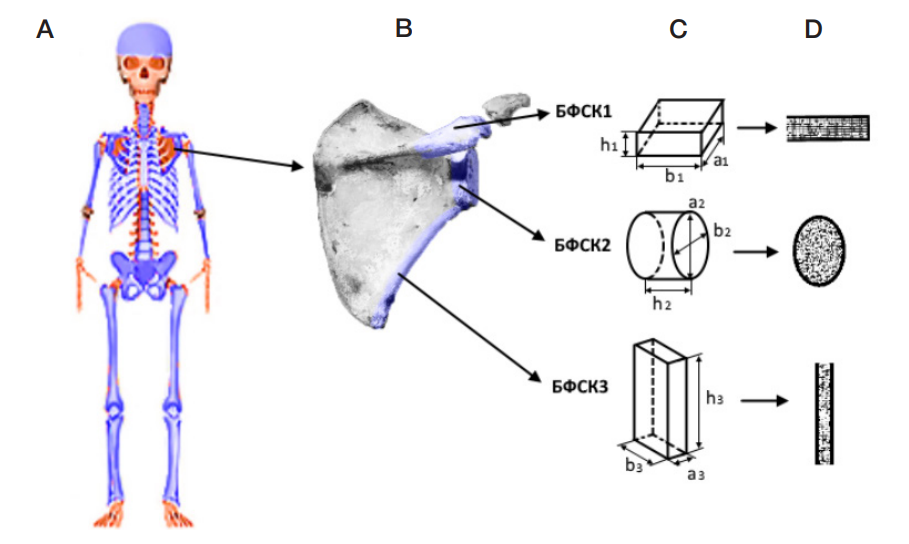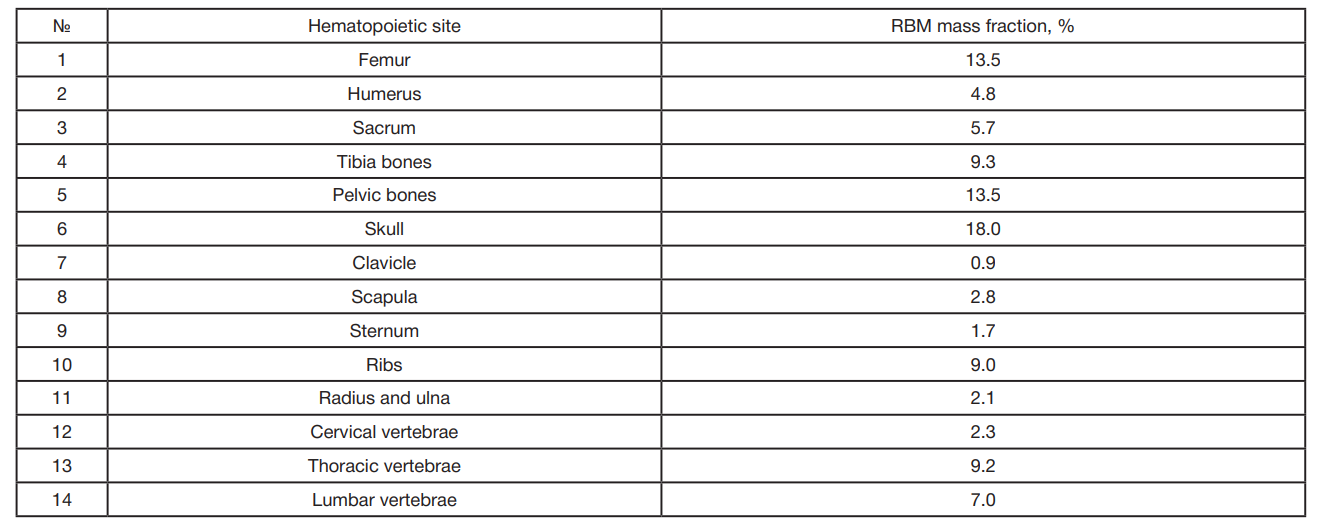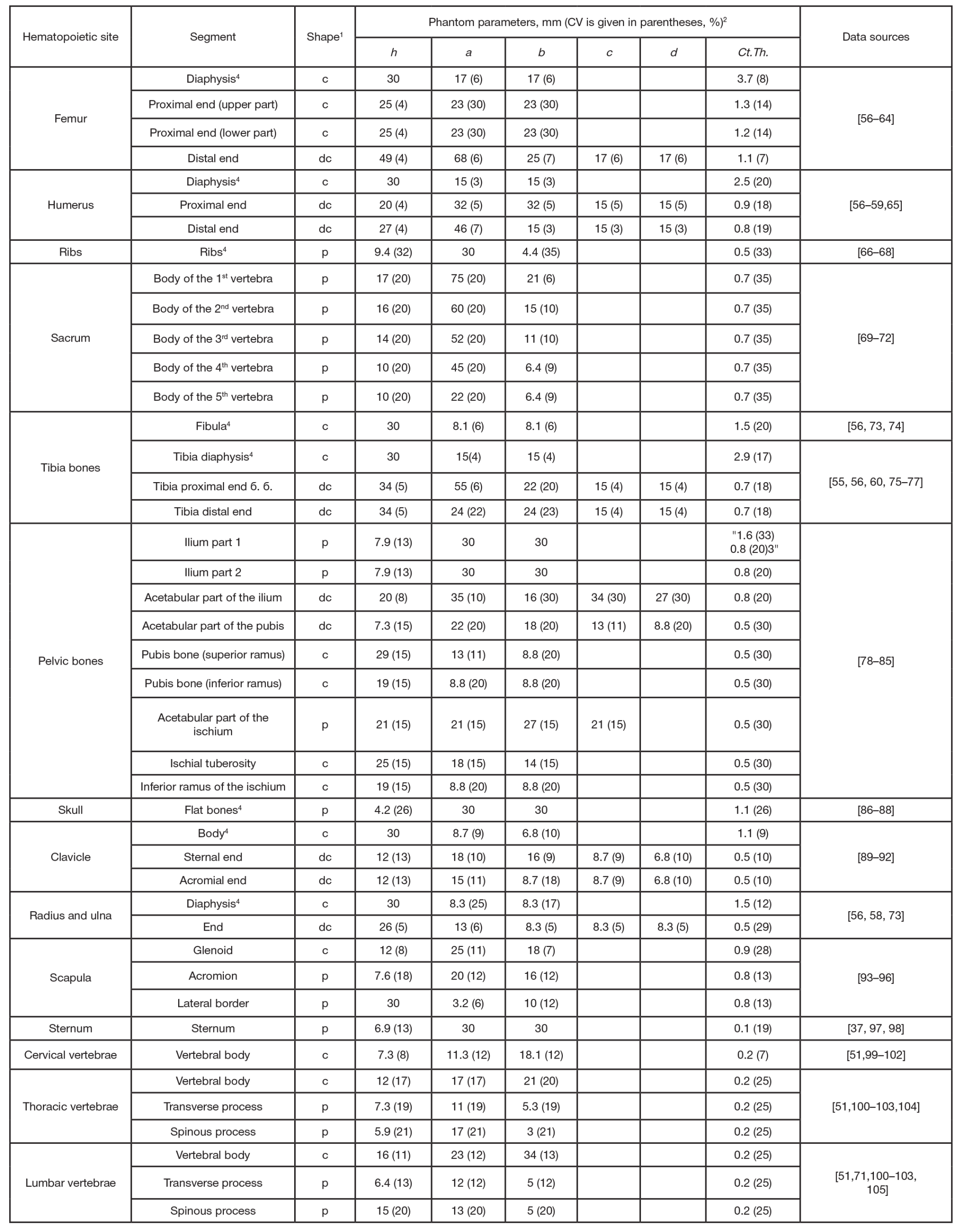
This article is an open access article distributed under the terms and conditions of the Creative Commons Attribution license (CC BY).
ORIGINAL RESEARCH
Computational phantom for a 5-year old child red bone marrow dosimetry due to incorporated beta emitters
1 Urals Research Center for Radiation Medicine of the Federal Medical-Biological Agency, Chelyabinsk, Russia
2 Chelyabinsk State University, Chelyabinsk, Russia
Correspondence should be addressed: Pavel A. Sharagin
Vorovskogo, 68-а, Chelyabinsk, 454141, Russia; ur.mrcru@nigarahs
Funding: the study was performed within the framework of the Federal Targeted Program "Ensuring Nuclear and Radiation Safety for 2016–2020 and for the Period up to 2035" and supported by the Federal Medical Biological Agency of Russia.
Author contribution: Sharagin PA — data acquisition, analysis and interpretation, manuscript writing and editing; Tolstykh EI — developing the research method; Shishkina EA — developing the concept, manuscript editing.





